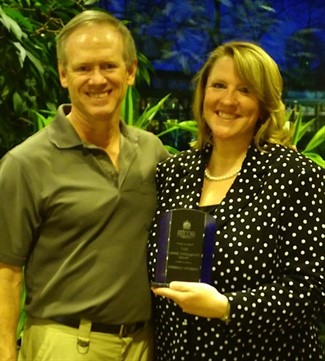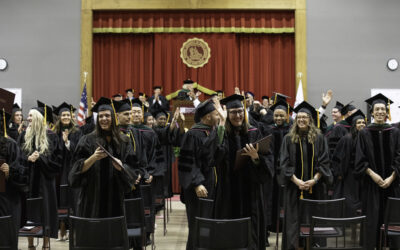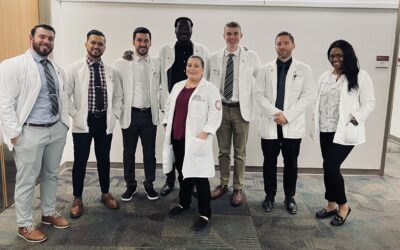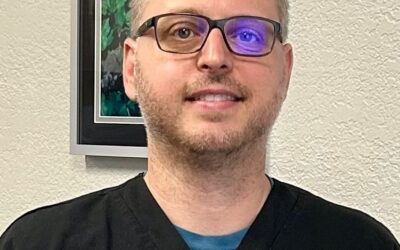NUHS faculty member Jerrilyn Cambron, DC, MPH, PhD, LMT, received the Distinguished Service Award last month from the Illinois Chapter of the American Massage Therapy Association (AMTA).
 The award is given to those who have contributed significantly to the continuity and advancement of the massage therapy profession through chapter growth, research, community outreach, government relations, media, and other worthy venues. Dr. Cambron received the award during a ceremony at the AMTA-IL Annual Meeting and Conference in Oak Brook March 24-26.
The award is given to those who have contributed significantly to the continuity and advancement of the massage therapy profession through chapter growth, research, community outreach, government relations, media, and other worthy venues. Dr. Cambron received the award during a ceremony at the AMTA-IL Annual Meeting and Conference in Oak Brook March 24-26.
“The award was a wonderful surprise and I am very honored,” said Dr. Cambron, chair of the College of Allied Health Sciences and Distance Education at National University. “I hope to continue making gains in research and helping the field progress.”
Some of her recent work includes co-authoring a series of research papers showing how massage therapy can help various pain conditions, including pain from surgery and cancer. The papers were published in a major medical journal Pain Medicine in the July, August, and September 2016 issues.
In the following, Dr. Cambron discusses first-hand her experiences in the massage therapy field.
How did you first become interested in massage therapy?
As a chiropractic physician, my main focus in research had been in chiropractic medicine until we started the Massage Therapy Program at National University. My clinical coordinator Jennifer Dexheimer and I conducted a small-scale study on massage therapy and blood pressure changes. Unlike previously thought, not all massage therapy techniques decreased blood pressure. The study found that some techniques actually increased blood pressure. Upon publishing the results from the study we received a great deal of interest from the national media. To further deepen our understanding of massage therapy we carried out additional studies. I then decided that it would be important for me to complete the Massage Therapy program so that I could speak about the research results with a stronger knowledge base.
What has kept you engaged in the profession, specifically massage therapy research?
Massage therapy has some overlap with chiropractic practice. Both massage therapists and chiropractic physicians can perform massage and stretches. Therefore, many of the research findings in massage therapy could be applied to the treatments offered by chiropractors.
In 2010, I joined the Massage Therapy Foundation (MTF) Board of Trustees. This organization focuses on massage therapy research, community service, and education- areas that are central to my own beliefs. I became Vice President of the MTF Board in 2012 and MTF President in 2014. Being surrounded by others who have the same passion as I do has really kept my interest alive.
How has the massage therapy field changed in the last 10 years?
Perhaps the biggest change that I have seen is the increased acceptance of massage therapy as a health care option. Part of this shift may be due to the increase in massage therapy research. In 2016, three major systematic reviews were published on massage therapy for pain including musculoskeletal pain, cancer-related pain, and surgical pain. Each press release for these articles reached a total of almost 90 million people! Because of research studies such as these, medical providers become more interested in working with massage therapists to determine if this form of care could be beneficial for their patients.
Where do you think the field is headed in the next ten years?
I think that there will be a continued push for higher levels of education in the massage therapy profession. There is already a growing interest in specialized board certification such as those through The National Certification Board for Therapeutic Massage & Bodywork (NCBTMB) for sports massage, integrative care, and military veteran massage. Research surrounding these forms of specialty care will certainly be a priority for the profession, as well.
What advice do you have for massage therapists new to the field?
You have chosen a great profession with many possibilities for employment! Get involved in the profession through local, state, or national organizations or through your alumni association. Networking can significantly help further your career and can also lead to new opportunities. As part of an association, you also get the chance to be involved with the growth and continued success of the overall profession.




0 Comments